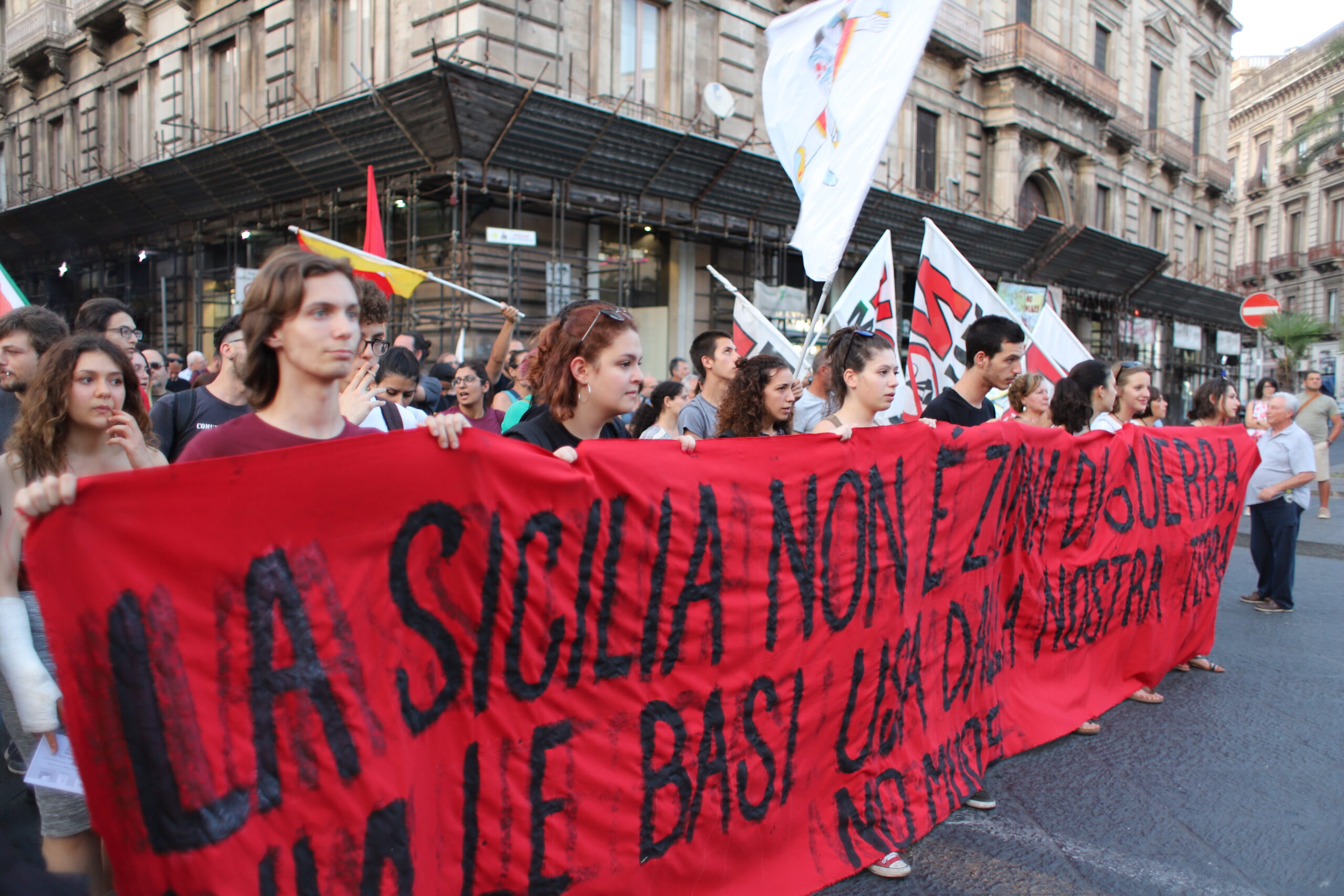In this striking image, a group of young activists march through the streets of Sicily, holding a bold red banner that reads, “LA SICILIA NON È ZONA DI GUERRA, NO ALLE BASI USA DALLA NOSTRA TERRA, NO MUOS.” Translated, it declares, “Sicily is not a war zone, no US bases on our land, no MUOS,” capturing their fervent opposition to the presence of US military installations and the Mobile User Objective System (MUOS) on their homeland. Set against an urban backdrop with historical architecture, the image suggests a protest in a significant Sicilian city area. The protesters’ expressions, ranging from solemn to resolute, underscore their deep commitment to their cause.
At first glance, this image might simply appear as a snapshot of an anti-war protest, a common occurrence worldwide. However, for photojournalists, the true story lies beyond the visible scene. This protest is not just a local event; it intersects with broader geopolitical narratives that have significant implications.

The Manipulation of Progressive Movements by Authoritarian Regimes
Photojournalism must strive to uncover these layers of truth. The protesters’ message against foreign military presence and the imposition of external powers reflects a wider sentiment. In Sicily, this opposition is particularly poignant given the island’s strategic location and historical experiences with foreign domination. The activists are not merely voicing their discontent; they are asserting their right to self-determination and sovereignty, challenging global power structures that often prioritize strategic interests over local well-being.
Yet, the dynamics at play are more complex than a straightforward anti-imperialist stance. The opposition to US military bases and systems like MUOS aligns with narratives propagated by certain authoritarian regimes that position themselves as challengers to Western hegemony. These regimes often frame their own agendas in terms of anti-imperialism and support for local sovereignty, thus finding common ground with progressive movements worldwide. While the activists in Sicily are driven by genuine concerns for their land and people, their movement can be inadvertently co-opted into a larger geopolitical strategy seeking to undermine Western influence.
Photojournalism has a critical role in illuminating these intricate connections. Beyond capturing the immediate fervor and determination of the protesters, it must also contextualize their struggle within the global political landscape. It should highlight how grassroots movements, while rooted in local issues, can become entangled with international power plays. This deeper understanding challenges oversimplified narratives and reveals the multifaceted nature of modern activism.
By seeing beyond the immediate image, photojournalism can reveal the broader truth: these young activists in Sicily are part of a global tapestry of resistance and assertion of rights. Their struggle, while deeply local, intersects with global forces in ways that are both empowering and potentially manipulative. Understanding this interplay is crucial for a comprehensive view of contemporary social movements and their place in the world.
Food for thought:
- PRSA ICON 2025, October 28–30, Washington, D.C.
- Garamendi Slams Trump and Hegseth’s Meeting with Military Leaders
- Strengthening Domestic Lumber Supply Amid Unfair Trade Practices
- Recalibrating Trade: A Stand for Economic Sovereignty
- Canada’s Aluminium Industry Condemns US Tariffs, Calls for Exemption to Protect North American Supply Chain
- A Progressive Shift in Pentagon Media Relations
- U.S. Postal Service is Ready to Deliver the Nation's Election Mail
- National Voter Registration Day 2024 Shattering Records
- National Police Association Asks U.S. Supreme Court to Protect Police Officers from Abusive Inclusion on Brady or Giglio Lists by Requiring Due Process
- Suffering from Biden-Harris' Radical Policies, Asian American Leaders Form National Alliance Supporting President Trump
Leave a Reply